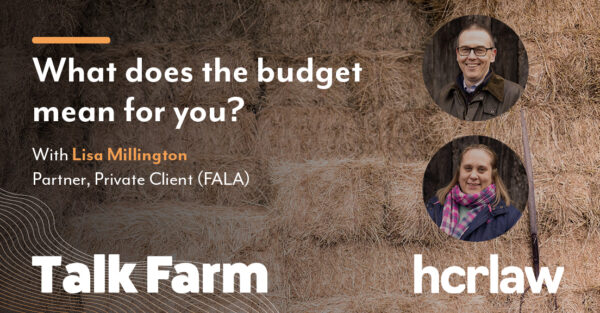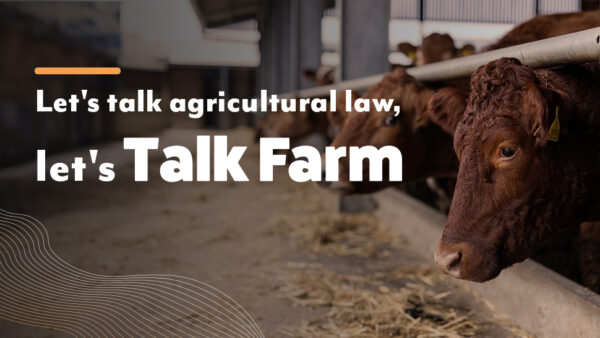

Since the announcement of the intended restriction of Agricultural Property Relief (“APR”) and Business Property Relief (“BPR”) in the October budget, an increasing number of our farming clients are turning their minds to succession planning. It is therefore important, perhaps more now than ever, to ensure that you have your house in order.
If you are to initiate any changes to your ownership structure, a crucial first step is to ensure that you have a full understanding of who owns what, if it is held as security, whether it is subject to overage or the class of title.
If your farm comprises several different titles, or is a complex property, it is worth investing the time to carry out a title audit. This can be done by you, or a solicitor can act on your behalf. These audits allow all parties involved to understand how each property or parcel of land is owned, whether the registration at Land Registry has been actioned correctly, and whether there is any lender involvement. With this knowledge, informed decisions can then be made.
We regularly come across circumstances where land is owned differently than was believed, usually between family members and partnerships. It often comes to light where a lender is proposing to take security against a property or title. Discovering the ownership is not what you believed at this stage can cause significant delays – by this point, money could already have been spent to obtain a mortgage offer and the matter could become urgent. Carrying out a title audit in advance can prevent this situation arising.
Once there is clarity on the ownership of the various assets, discussions can then take place with your professional advisers to formulate a succession plan, which may include transferring ownership of assets if needed. It should be noted that if you are to move assets being used as security, even if just between partners in a partnership, this will require refinancing with either the existing or a new lender. As such the bank will also need to be involved in such discussions.
Of course, there are also tax implications of moving assets from one person to another and, even if one of the main motivators for this is inheritance tax planning, there are other taxes to be considered.
It is generally well understood that if you make a gift of an asset in lifetime and survive that gift by seven years, the value of the asset falls out of your estate for inheritance tax purposes. What is often not so widely understood is that, once you have given that asset away, you can no longer derive any benefit from it – for example income.
If you do, you risk falling foul of the gift with reservation of benefit rules, which means the value of the asset remains comprised in your estate for inheritance tax purposes even beyond the seven years.
A gift is also a disposal for capital gains tax purposes, although, in most cases, a gift of agricultural assets can qualify for holdover relief, meaning no tax is due at the point of the gift and the latent gain is inherited by the recipient.
Finally, where land, for example, is charged to secure borrowings, if the recipient of the land also assumes responsibility for the debt, SDLT can become payable.
There is, therefore, much to consider when it comes to succession planning and working out the best way to pass your farming business on to the next generation. Investing time in getting your house in order and making sure you have a good understanding of who owns what as a starting point will serve you well not just as part of the succession planning exercise, but in terms of the general management of the business going forward.
Insights for landowners
While the restrictions on APR and BPR may cause concern for many landowners, and succession planning is often at the end of an otherwise very long list, we would suggest that it is in the best interest of all landowners to understand the specifics of the property they own before sitting down with professionals to formulate a plan to ensure that their property is passed, in as efficient a way as possible, as hoped and intended.










